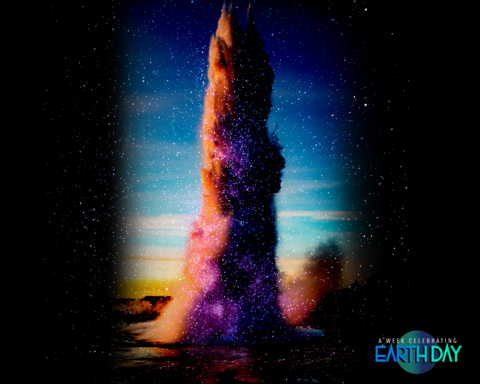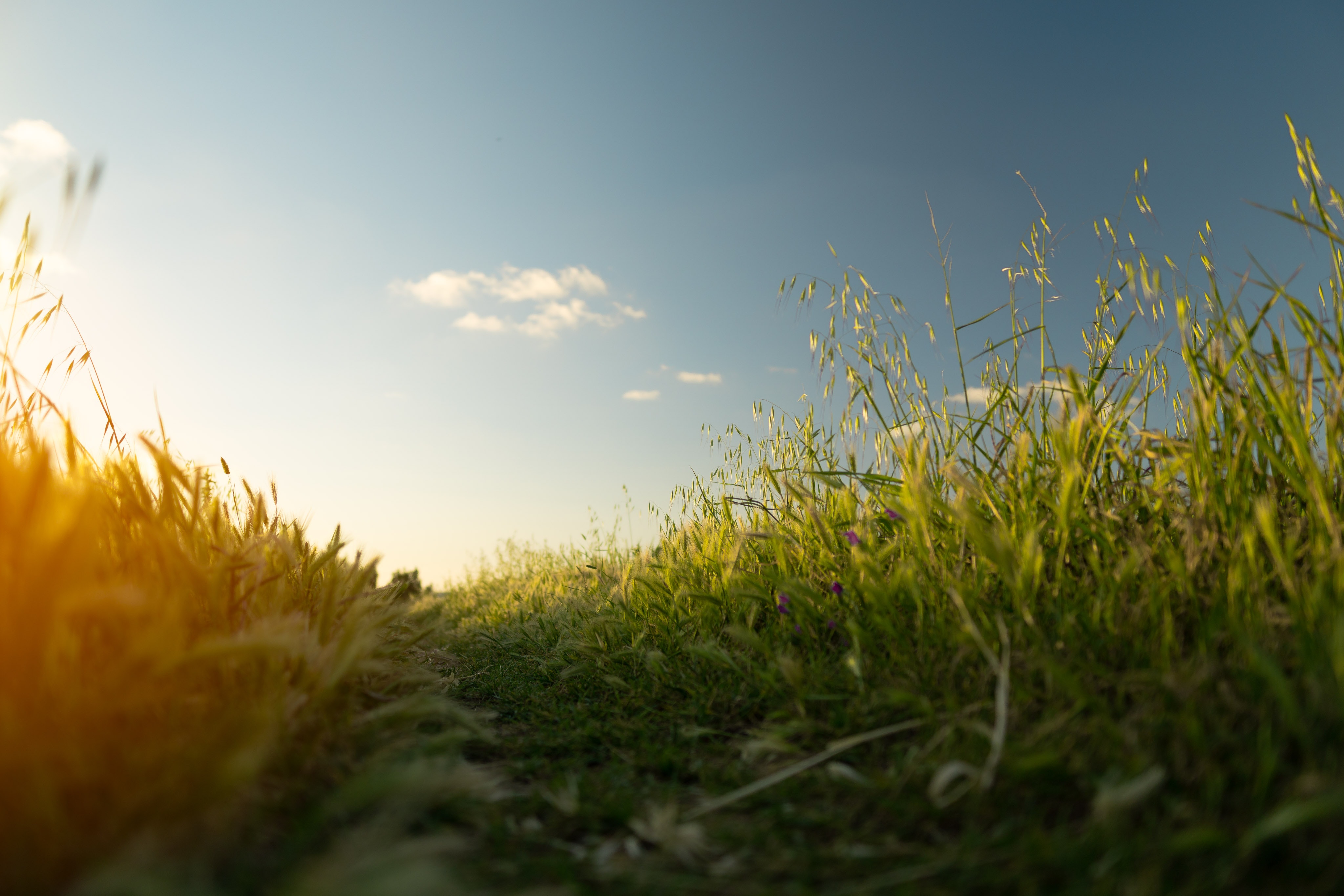review by Nancy Corson Carter
The dedication of this book, “For Grandfather—and Elizabeth,” is accompanied by an arresting photo titled “Belden and Elizabeth in Grandfather’s Side.” Thus we know the name of this winsome child, and surely the broadly smiling bearded man is the author, but who is the invisible “Grandfather”?
Only by reading the Preface do we learn that the dark narrow band at the top of the photo is a sliver of Grandfather, the elderly Eastern Cottonwood living in a city park across the street from Belden C. Lane’s house. On nightly visits over the last quarter century to this tree he claims as a spiritual director, Lane has gathered the themes that animate this book. A Presbyterian theologian who taught with Jesuits at Saint Louis University for thirty-five years, he names himself in retirement as a “scholar-in recovery,” dedicated to spending “more time on the trail, moving into a deliberate contemplative practice.”
Thus he means to leave behind an academic immersion in words to undertake what desert saints called the “via negativa.” The intention is to intuit what the Earth community yearns to teach us about our vital interconnections if only we will humble ourselves to listen. Grandfather is the teacher Lane has chosen (or been chosen by) as he pursues a life of falling in love with wild things. They know languages, he asserts, that we desperately need to understand in these desperate times for the Earth. His grand-daughter Elizabeth makes him aware of the responsibility this work bestows upon us for the sake of generations to come.
The book is patterned after a great “soulcentric developmental wheel” shown in a figure in the Introduction which is built on the work of Bill Plotkin, Eric Erikson, and Joseph Campbell. Like a medicine wheel, it is divided into four sections for the cardinal directions and the yearly seasons, each with its major element and each representing a season of human life—from EAST/Spring/AIR/the Golden Child through to NORTH/Winter/EARTH/The Wise Elder. The whole wheel is divided into 2 halves, Spring and Summer for Ascent of the Spirit and Fall and Winter for Descent of the Soul.
This diagram provides the “bones” fleshed out by Lane’s stories of his journeys, often solo, to places like Escalante Wilderness canyons, the Western Australian bush, the wolf-elk-grizzly territory of Yellowstone, and a Missouri bat cave. But his continuing journey is with the single cottonwood who has introduced him to “a world that’s alive with wonder.”
Grandfather’s losing one of two great trunks growing from his roots and Lane’s mother’s dying first brought the two together he says. Beyond that, enumerating the anguish we share with the other-than-human world due to climate change, habitat destruction, record-breaking fires, floods, loss of species diversity and other woes, Lane hears “voices of a planet in travail.” They call us to a celebration of all still alive and “to a language of lament that gives birth to action.” He reminds us of the constantly interconnected inner and outer movements required by these understandings.
He notes that Carl Jung has asked the great question of our time: “How do we find a way to get everything back into connection with everything else?” This is the longed-for “Great Conversation” of his title. Lane’s experience has taught him that it “will have to be pursued with long sleeves and thick gloves, with beekeeper’s head-net in place and snakebite kit within reach. It involves risk, a stretching of mind and body.”
Lane finds that as we yearn to find an integrated life within the connecting web we require a spiritual practice. His is a commitment to wilderness backpacking. In the main part of the book he takes us with him on a wildly diverse dozen of his wilderness journeys. He has selected twelve teachers from various world spiritual traditions as companions. I briefly discuss two of these journeys-plus-teachers as representative of his generous interweaving of the personal—his own celebrations and concerns, his joys and fears–with texts that expand that immediate experience into the wide realms of the cosmos.
Thus we meet Farid ud-In Attar, a great Persian Sufi poet (known for the medieval text, The Conference of the Birds) along with sandhill cranes on his journey along the Platte River in Nebraska. Attar’s narrative leads us to the birds’ discovery that the king they have spent lifetimes seeking, the Simorgh, is themselves. The story, along with the majesty and mystery of many birds he’s encountered, awakens in Lane a soul hunger to meet again the Jesus he encountered “as a ten-year-old boy at a revival meeting in the American South.” He tells us too of a recurring dream he had as a boy that he could fly. We’re reminded that the element of AIR, of euphoric joining with birds as teachers can re-unite us with “a vast ecology of the sacred.”
The journey closest to home fulfills his long-standing dream of spending the night in Grandfather’s branches. A climbing teacher shows him double-rope tree-climbing technique and prepares a hammock strung to limbs below the tree’s canopy. Then, on a March afternoon with a clear night coming, Lane makes it up 90-feet for an ecstatic experience. He’s an adventurous 70-year-old “backpacking” in a 100-year-old cottonwood. Hildegard of Bingen is the teacher he’s chosen to accompany him this time, a saint who considered trees as special teachers of holy things. As an herbalist-healer, a musician, a defender of a beleaguered Earth, she understood the soul as life force (viriditas) infusinggreenness into all the branches of the Tree of Life, God’s radiant Being. That evening, Lane delights at being in the heart of the waning sun’s radiance as he begins his night in Grandfather’s high embrace.
This is a very synthetic and inspiring book. I find Belden Lane’s words, especially those about approaching the wordless (!) richly evocative. They also challenge me. The closest I come to spiritual backpacking is working in the gardens around my home and occasionally hiking in nearby parks. I’ve been in a number of the places he mentions, but not alone and rarely overnight outside on the ground. Still I practice listening as well as I can, and I imagine each reader will be encouraged to do the same, stretching in the effort.
In the final pages, Lane urges us to listen to the elders who have been warning of the flood that’s coming. I think of the unforgettable film produced by National Geographic and narrated by Leonardo DiCaprio, THE FLOOD NEXT TIME. Lane optimizes: “But the elders also know, that a raging river brings new life.”
He quotes Hafiz as a reminder that everything is sacred; everything matters:
Because
There is nothing
Outside of my Master’s Body
I try
To show reverence
To all things.
In closing, Lane reminds us of the importance of laughter: “It’s how the Great Conversation is reborn–acknowledging that we are a huge and hilarious community where laughter gives rise to magic, and magic to story, and story to hope. May it be so.
(poem above from The Gift: Poems from Hafiz, trans. Daniel Ladinsky [New York: Penguin Compass, 1999], 173)

Nancy Corson Carter, PhD, Professor Emerita of Humanities at Eckerd College, now has published three poetry books, Dragon Poems,The Sourdough Dream Kit, and A Green Bough: Poems for Renewal (2019)as well as three poetry chapbooks. Some of her poems, drawings, and photos appear in her non-fiction book, Martha, Mary, and Jesus: Weaving Action and Contemplation in Daily Life and inher memoir, The Never-Quite-Ending War: a WWII GI Daughter’s Stories. She and her husband live in Chapel Hill, North Carolina.






Unbound Social